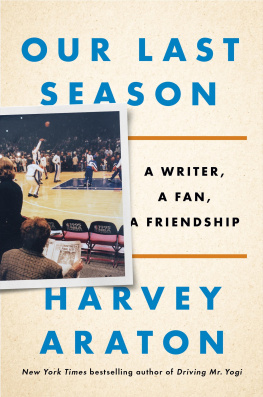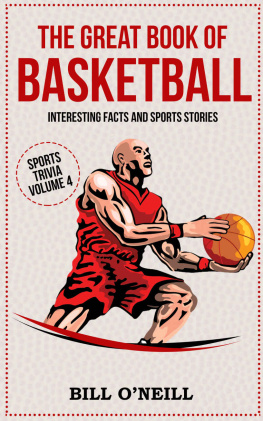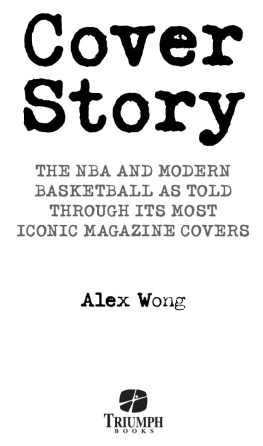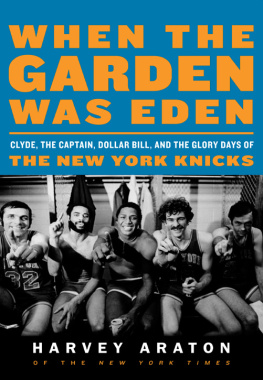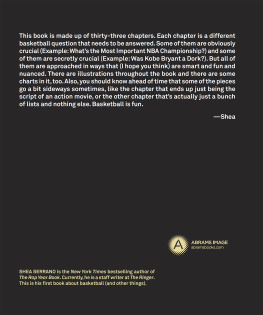
Copyright 1974, 2010 by Walt Frazier and Ira Berkow
No part of this publication may be reproduced, stored in a retrieval system, or transmitted in any form by any means, electronic, mechanical, photocopying, or otherwise, without the prior written permission of the publisher, Triumph Books, 542 South Dearborn Street, Suite 750, Chicago, Illinois 60605.
Triumph Books and colophon are registered trademarks of Random House, Inc.
Library of Congress Cataloging-in-Publication Data
Frazier, Walt, 1945
Rockin steady : a guide to basketball & cool / Walt Frazier and Ira Berkow.
p. cm.
ISBN 978-1-60078-526-9
1. Frazier, Walt, 1945- 2. Basketball. I. Berkow, Ira. II. Title.
GV884.F7A36 2010
796.323092dc22
[B]
2010030479
This book is available in quantity at special discounts for your group or organization. For further information, contact:
TRIUMPH BOOKS
542 South Dearborn Street
Suite 750
Chicago, Illinois 60605
(312) 9393330
www.triumphbooks.com
Printed in U.S.A.
ISBN: 978-1-60078-526-9
Design by Paul Petrowsky
Illustrations by John Lane
Photos courtesy of Walter Iooss Jr., except pages (AP Images).
CONTENTS


PREFACE Ira Berkow
W hen I was contacted in 1970 by Prentice-Hall, the original publisher of Rockin Steady, about writing a book with Walt Fraziershortly after his backcourt steering of the New York Knicks to the National Basketball Association championship over the Los Angeles Lakersthe idea was to write a basketball instructional. It would carry weight, it was felt, since Frazier was also a first-team All-NBA guard, which meant that essentially he was one of the five best basketball players in the world. I said fine to the book. So did Clyde, as Frazier was known citywide if not nationwide.
I had covered the Knicks as a reporter and columnist and knew Clyde. I also was an avid pickup hoops player. I thought it would be fun. Turned out, it was much more funand educationalthan I could have anticipated.
Clyde had a wry sense of humor; he was smartyou dont reach the heights he had by not being perceptiveand he was eminently approachable. He was a Superstar without any self-imposed Superstar baggage. He had a strong sense of self. While the great Knicks coach Red Holzman called Clyde his main man, Clyde was also his own man, as the pages in the book would come to illustrate.
The more time I spent cruising with Clyde, the more I realized that this book could be more than simply a basketball instructional, and thus emerged Rockin Steady: A Guide to Basketball and Cool.
Clyde and I had the great good fortune to hire the wondrous combination of photographer Walter Iooss Jr., and artist John Lane to enhance the book. Sayre Ross, an independent packager and layout artist in his own right, was asked by editor Nick DIncecco of Prentice-Hall to put the book together.
Rockin Steady was published in the spring of 1974. A few examples of the reaction:
After a game at Madison Square Garden one night I gave a copy of the book to Woody Allen, a Knicks season-ticket holder who I did not know personally. The next morning I was surprised to receive a call in my office at Newspaper Enterprise Association. It was Woody Allen, who told me, My date and I read Rockin Steady aloud to each other in a Chinese restaurant last nighthis date was Diane Keaton. We had a great time with the book.
I sent a copy of the book to the essayist E.B. White, who lived in Maine. I loosely structured Rockin Steady on Whites Elements of Style, the magnificent writing instructional. White wrote back: Rockin Steady has kept me steady for several days and I have been enjoying it, particularly since I had never heard of Clyde (I live a sheltered life).
If Rembrandt were alive, Id have sent him a copy, too, since his painting in the Metropolitan Museum of Art, Aristotle Contemplating the Bust of Homer, with its gorgeous blacks and golds and the Clyde chapeau and medallion, gave inspiration to one of the more striking photos in the book.
Rockin Steady was used as a text in an introductory Afro-American studies course at Yale University. It was also selected for the private White House library collection. I happened to meet President Obama at a baseball game. When we were introduced, this ardent basketball fan and player said to me, You wrote the book with Clyde. I said I did. He smiled and said, With all the fashion and how to catch flies. I said yes. He said, I bought the book when I was 12 years old. To our delight, the book even received awards.
Though it went out of print, Rockin Steady continued over the years to have a following. Early in 2010, the book caught the attention of Mitch Rogatz, the sagacious publisher of Triumph Books, and his equally wise editorial guru Adam Motin. They thought the book ought to have a second life in print, and sought to re-issue it.
So here is Rockin Steady again, back in Broadway lights. 

INTRODUCTION Bill Russell 1974
W hen I was first asked to write an introduction to this book, my first thought was how to take up two or three pages of space talking about a guy I can sum up in a few words. The answer came to me in a flash: why not sum Clyde up in a few words.
Clyde is a super guy. To say he is a super ballplayer is redundant. His six years with the Knicks have earned him a place among the games greats, and his sneaky way with a ball has earned him the only half-kidding title, Masterthief. The fans like Clyde not only because he plays good ball but also because hes reachable as a personthey like his funny wide-brimmed hats and easy laugh.
Next page

